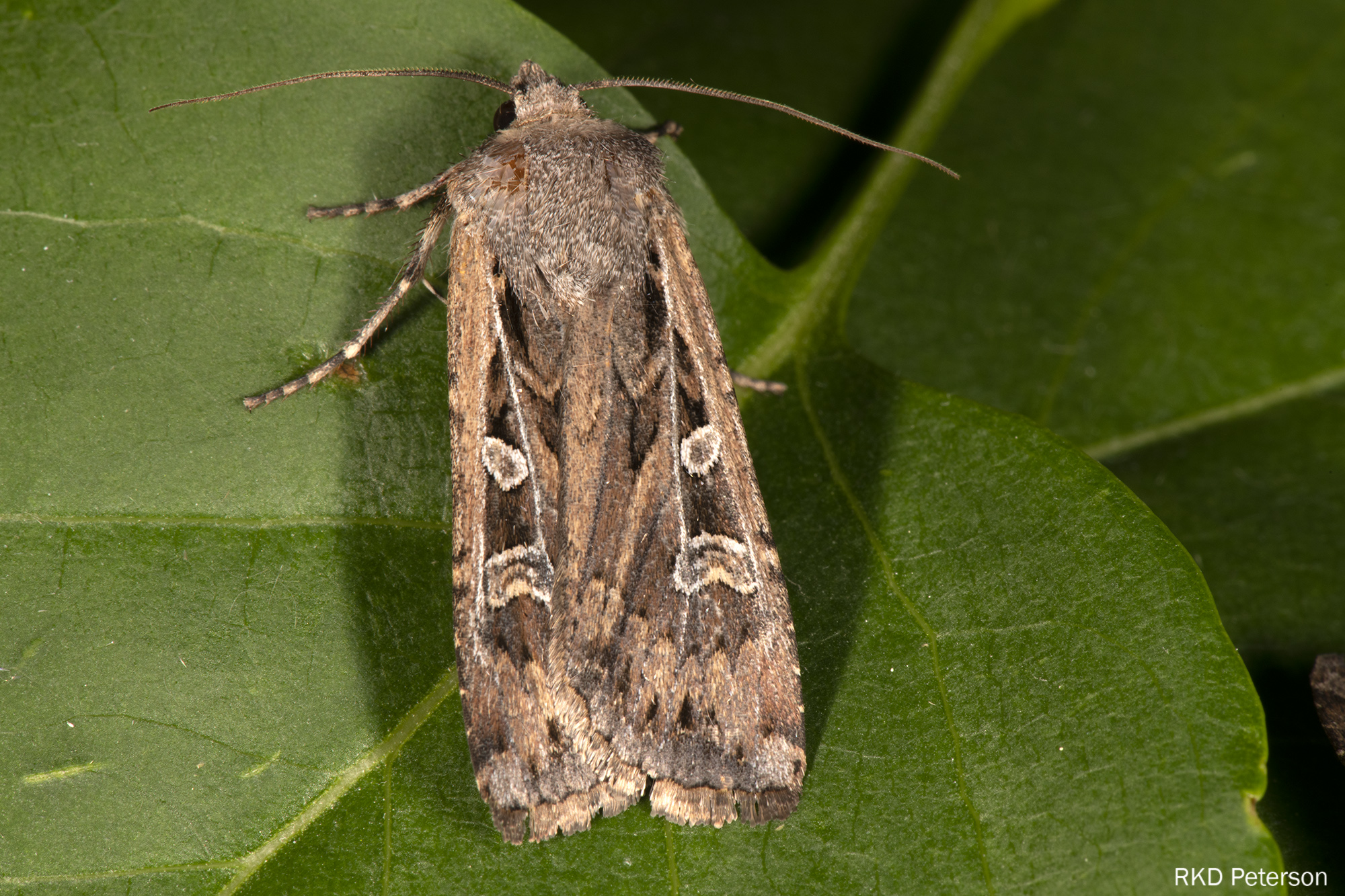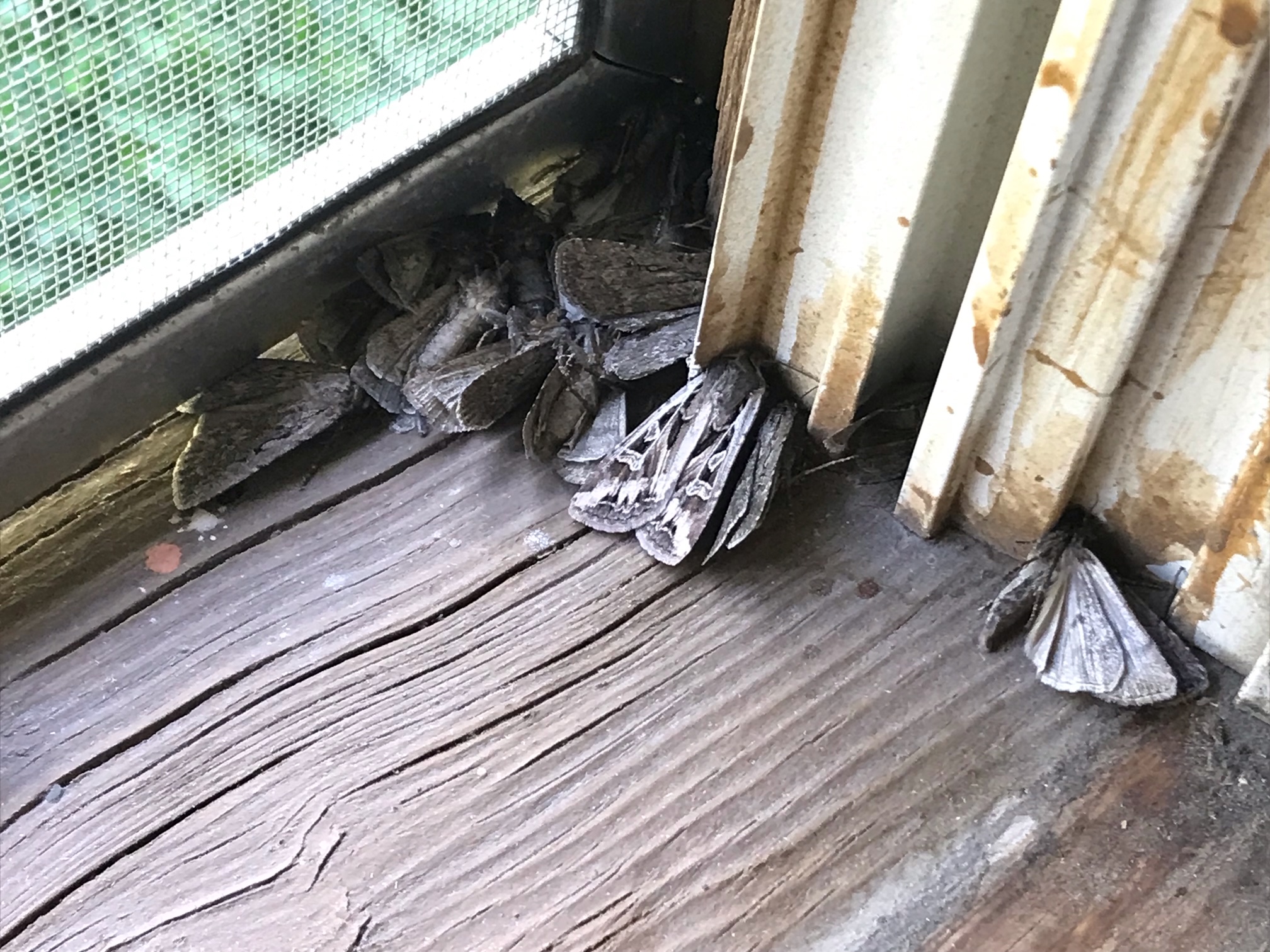Miller Moths (Army Cutworm, Euxoa auxiliaris)
Miller moths are congregating around homes in Billings, Bozeman, and surrounding areas. Sometimes the moth populations can be in the hundreds to thousands. They are normally around for two to three weeks. Outbreaks are sporadic.

As adults, they are a nuisance as they are “passing through” in May and June during their migrations to higher elevations to oversummer. When they are migrating, they are feeding on the nectar of flowering plants in our yards, especially those with yellow or white flowers. Some preferred plants include Russian olive, spirea, euonymus, and cotoneaster.

As caterpillars, they are called “army cutworms” and are active in the spring. Sometimes they occur so commonly that they can be seen moving in bands.
The term “miller moth” refers to a moth that is locally abundant and that has scales that dislodge from the wings. In our state, the most common miller moth is the army cutworm, Euxoa auxiliaris. The dominant miller moth species varies between states.
Miller moths have a one-year life cycle. Eggs are laid in the fall. The caterpillars will feed following egg hatch and then enter a semi-dormant state. They become active in the spring and will start feeding on winter wheat, alfalfa, rangeland areas, some vegetables, and turfgrass. Caterpillars feed mostly at night. They are most often located around field edges. Blackbirds will flock to crop fields to feed on the cutworms.
The adults will then migrate to higher elevations, feeding on the nectar of flowers. During their annual migrations, they fly from the eastern plains to the mountains, which can involve hundreds of miles. The adults then return to the plains in September and October. They also feed almost exclusively at night. During the day, they like to hide in small cracks and crevices, which can be in homes, under cars, and other areas around the home. They don’t reproduce or feed on anything within the home.
Miller moths are pollinators. They are also a big part of the grizzly bear’s diet. Grizzlies can feed heavily on the moths in higher elevations (sometimes up to 40,000 moths per day in July and August). Birds also feed on the caterpillars and adult moths.
Management: Turn off porch lights; they are attracted to lights. You can also put a light source in another area with a bucket of soapy water underneath for them to fall into. Vacuum up the moths when they are inside the home. Jingle keys or coins, as they don’t like erratic noises. Insecticides are rarely effective against the moths, as they are not very susceptible to them.
Further Information
To learn more about the topics discussed on this page, contact the Schutter Diagnostic Lab. If you suspect an infestation on your property, contact your local extension agent, the Schutter Diagnostic Lab at Montana State University, or the Montana Department of Agriculture.
This June 2022 fact sheet is also available as a printable PDF (312KB).
Disclaimer: These recommendations are provided only as a guide. It is always the pesticide applicator’s responsibility, by law, to read and follow all current label directions for the specific pesticide being used. The authors and Montana State University assume no liability resulting from the use of these recommendations. The Montana State University Extension Service is an ADA/EO/AA/Veteran’s Preference Employer and Provider of Educational Outreach.
